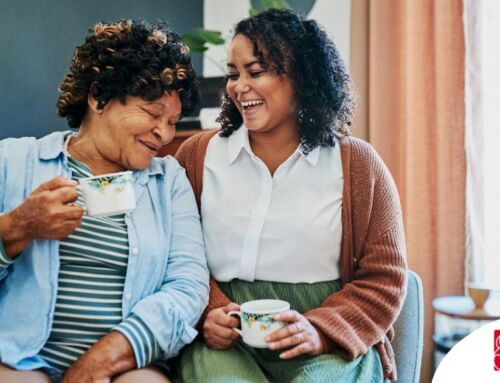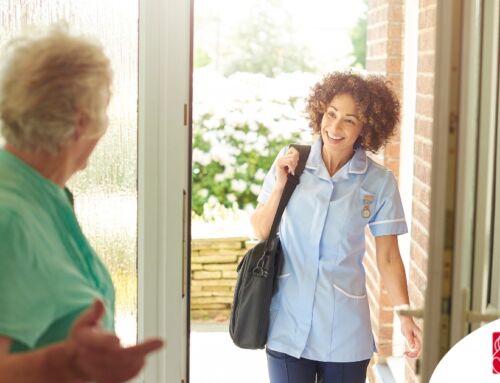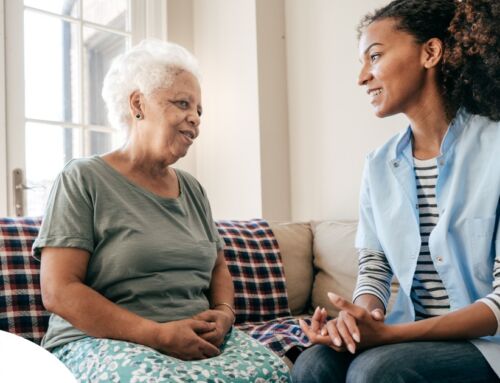The aging process brings numerous changes to our bodies, and one of the most common yet devastating ones is the deterioration of vision. Losing sight is a major concern for the elderly population as it significantly impacts their quality of life, independence, and overall well-being. Let’s explore some of the key concerns associated with vision loss in the elderly and delve into potential solutions and support systems.
5 Concerns About Vision Loss
Impact on Daily Activities
The first concern for the elderly experiencing the loss of sight is the impact on daily activities. Simple tasks such as reading, watching television, or cooking become increasingly difficult or impossible. This leads to a loss of independence and a heightened reliance on caregivers for assistance. It is essential to recognize that even mundane activities hold significant value in an individual’s life.
Consequently, addressing these challenges should encompass both physical adjustments and psychological support to minimize the impact on the individual’s sense of self.
Loss of Independence
Losing sight later in life can often lead to a loss of independence. Vision plays a crucial role in daily activities such as driving, reading, and navigating unfamiliar places. When seniors can no longer perform these tasks, their freedom and ability to participate fully in society become restricted.
Simple activities like grocery shopping or managing medications may become challenging or impossible without assistance, which can lead to feelings of frustration, helplessness, and isolation.
Mental Health Impact
Vision loss can have a profound impact on mental health among the elderly. Studies have shown that individuals experiencing declining vision are more prone to depression and anxiety. A frequently encountered concern by the elderly is the feeling of isolation and social disconnection resulting from visual impairments.
Vision loss can limit the ability to recognize facial expressions, read body language, or participate in social activities. This lack of visual cues often leads to withdrawal from social engagements, contributing to increased loneliness and depression.
Increased Risk of Accidents
Safety concerns arise as an inevitable consequence of diminishing eyesight among the older population. Mobility becomes challenging, increasing the risk of accidents, falls, and injuries. Navigating familiar spaces becomes uncertain, and daily outdoor activities become daunting for fear of mishaps.
As the ability to perceive depth and judge distances diminishes, the elderly are more likely to trip over obstacles or misstep on uneven surfaces. These incidents can result in serious injuries and complications, further exacerbating the impact of losing sight.
Addressing this concern involves creating environments that are safe and accessible through modifications such as installing handrails, removing clutter, and providing adequate lighting.
Overall Physical Health
Visual impairment can also impact the overall physical health of the elderly. The ability to read medication instructions, dietary labels, or exercise routines becomes challenging without adequate visual acuity. These challenges may lead to medication mismanagement and reduced adherence to healthy habits, thereby increasing the likelihood of health complications.
For example, the loss of vision can make it difficult to manage chronic conditions like diabetes, requiring regular monitoring of blood sugar levels or self-administering medication. Additionally, maintaining an active lifestyle becomes challenging, leading to a sedentary lifestyle that increases the risk of obesity and associated health issues.
Potential Solutions
While the concerns surrounding vision loss for the elderly are undeniable, there are several measures that can help alleviate the impact. Hiring a certified, trained caregiver, such as those matched by CareGivers of America is a safe and affordable way to help your loved one manage their vision loss.
Assistive technologies such as magnifiers, talking devices, or even smartphone applications specifically designed for the visually impaired can help enhance independence and participation.
Furthermore, providing training in orientation and mobility skills can equip the elderly with strategies to navigate their surroundings more effectively and confidently.
Lastly, fostering a supportive and inclusive environment within communities can help counteract the social isolation experienced by the visually impaired elderly.
Wrap Up
The concerns associated with losing sight for the elderly are multifaceted and require our empathetic understanding and support. It is crucial to recognize the far-reaching consequences of visual impairment, including the loss of independence, mental health challenges, increased risk of accidents, and declining physical well-being. By advocating for accessible resources, promoting inclusive communities, and raising awareness, we can help mitigate these concerns and improve the quality of life for the visually impaired elderly.
~ ~ ~
For over 30 years, CareGivers of America has proven our leadership in the home health care industry while showing continuous dedication in referring the highest level of care. There is an alternative to nursing homes and assisted living facilities; Home Health Care. We serve families in the south Florida counties of Palm Beach, Broward, and Miami-Dade.
Do you have questions about how you can better support your loved one while they age in place in south Florida or regarding homecare in general? Please contact us here: Click here to contact us or call us toll free: 800-342-4197
Our amazing mailing list is where you’ll receive special content, click here to subscribe.
*No information in this article is to be taken as advice, medical or otherwise. This post is not sponsored, but may contain external links to websites, articles or product examples. External links are used for example or reference purposes only and these links do not indicate specific product or website endorsement by CareGivers of America.





